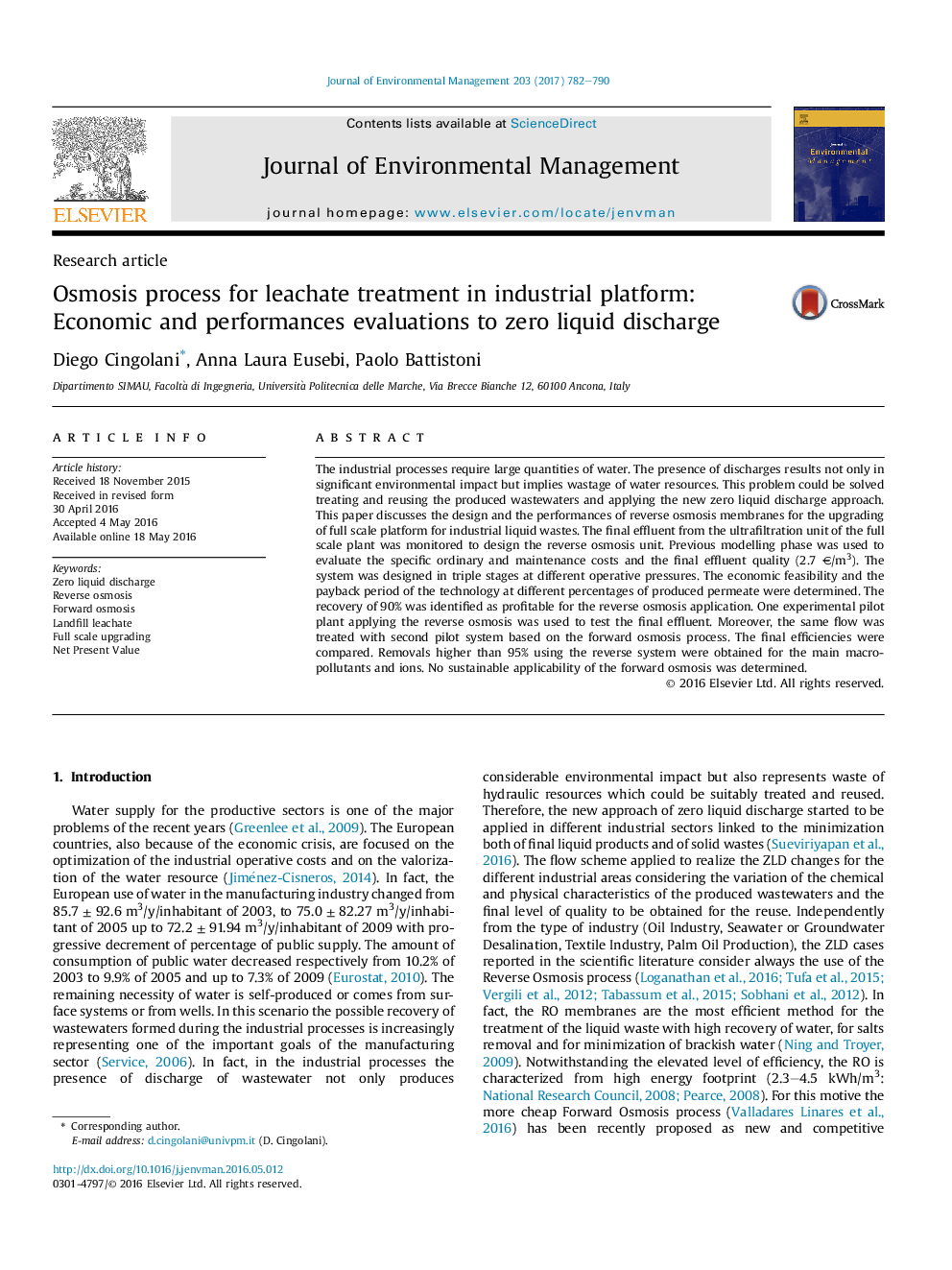| کد مقاله | کد نشریه | سال انتشار | مقاله انگلیسی | نسخه تمام متن |
|---|---|---|---|---|
| 5116438 | 1378097 | 2017 | 9 صفحه PDF | دانلود رایگان |
- RO at high pressure is tested to ZLD approach in full scale platform for leachates.
- Specific cost for the industrial treatment (MBR-RO coupled) was defined.
- Profitability of investment (NPV) for MBR-RO leachate treatment was assessed.
- The maximum recovery by triple stages RO system was defined.
- The achievable performances by demonstrative FO pilot plant were investigated.
The industrial processes require large quantities of water. The presence of discharges results not only in significant environmental impact but implies wastage of water resources. This problem could be solved treating and reusing the produced wastewaters and applying the new zero liquid discharge approach. This paper discusses the design and the performances of reverse osmosis membranes for the upgrading of full scale platform for industrial liquid wastes. The final effluent from the ultrafiltration unit of the full scale plant was monitored to design the reverse osmosis unit. Previous modelling phase was used to evaluate the specific ordinary and maintenance costs and the final effluent quality (2.7 â¬/m3). The system was designed in triple stages at different operative pressures. The economic feasibility and the payback period of the technology at different percentages of produced permeate were determined. The recovery of 90% was identified as profitable for the reverse osmosis application. One experimental pilot plant applying the reverse osmosis was used to test the final effluent. Moreover, the same flow was treated with second pilot system based on the forward osmosis process. The final efficiencies were compared. Removals higher than 95% using the reverse system were obtained for the main macropollutants and ions. No sustainable applicability of the forward osmosis was determined.
Journal: Journal of Environmental Management - Volume 203, Part 2, 1 December 2017, Pages 782-790
